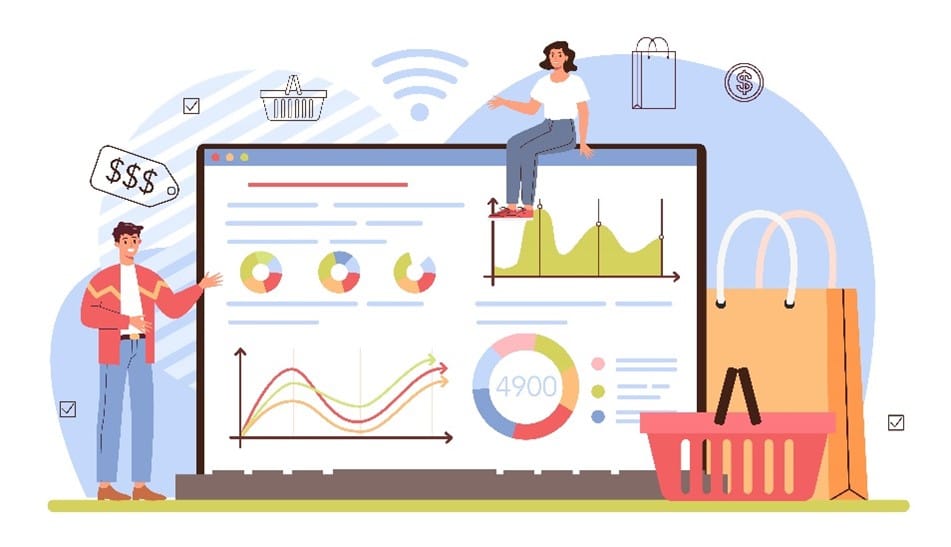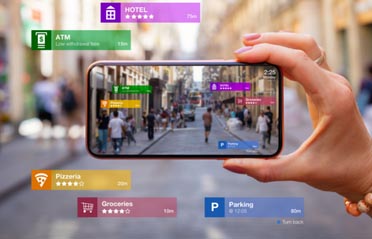The post-pandemic period has been a time of recovery for many retailers, and customers have rewarded businesses with increased sales. In today’s competitive retail landscape, companies are vying for customer attention across multiple channels, including offline and online retail, apps, and mobile commerce.
Although initially, there has been growth in e-commerce, it is now slowing down, and sustainable business models are what will survive. Physical retail stores are essential for customers and can offer a better shopping experience than online.
Let us look at some key challenges and trends that will shape the future of retail in India. Some of our observations were also echoed at the Retail Leadership Summit organized by Retailer’s Association India that we attended recently in Mumbai.
AI & Analytics in Retail - Opportunities it Presents
Over the last few years, retailers have recognized the value of data and have invested in technologies that process data faster, better, and more efficiently.
Personalized offers, one of the critical advantages of data analytics, have been around for years, but it was mostly a decentralized process driven by individuals. The change in the industry will be driven by how retailers build knowledge capabilities centrally and execute them in a decentralized manner.

It is estimated that by 2025, approximately 150 to 175 zettabytes of data will be generated. While the human mind cannot process this amount of information, it is fascinating how enabling technologies like AI can process it. Retailers are already harnessing the power of data analytics and AI to improve their business processes and customer experience and increase sales.
“For instance, a leading retail company in India uses data analytics to identify customer preferences and behavior patterns. They analyze data from various sources, such as customer transactions, social media, and mobile devices, to create a unified view of the customer. This information helps them personalize the offers made to the customer and enhance their shopping experience.”
“Another leading retailer in India uses AI and machine learning to optimize its supply chain management. They use AI algorithms to analyze data from various sources, such as weather patterns, shipping routes, and warehouse inventory levels, to predict demand and optimize inventory levels. This optimization helps reduce costs, improve efficiency, and increase customer satisfaction.”
However, retailers are cautious about the unintended consequences of their actions. The “do it for me” stage, where AI takes over the decision-making process, can lead to unintended consequences. Therefore, it is vital to strike a healthy balance between data-driven decision-making and human intervention.
Giving Customers Control of Their Experiences
Indian Retail businesses face a primary challenge in keeping up with evolving customer expectations in a world that values instant gratification and real-time engagement.
To give customers back control of their experiences, retail must adapt to the changing customer expectations by investing in technologies and resources that enable real-time engagement and personalization. This includes using messaging apps like WhatsApp, chatbots, automation, and self-service options.
Retailers also need to focus on providing personalized and relevant experiences that meet their specific needs and preferences, which requires a deep understanding of customer data and investing in data analytics and other technologies to collect, store, and analyze customer data effectively.

Finally, empowering customers with self-service options enabling them to manage their experiences on their terms, is an essential element of giving them back control of their experiences. By doing this, Retailers can build trust and loyalty, creating a competitive advantage in an increasingly dynamic and evolving market.
The Omnichannel Aspect of Retail
Another challenge often faced by retailers is to provide customers with a product and brand that they desire, delivered in the most convenient way possible. However, achieving this convenience while maintaining profitability can be quite a task. There shall be ways to deliver online orders from stores, reduce delivery lead times, and integrate inventory across channels.
Additionally, it must be ensured retailers have a single view of their audience across all touchpoints, whether it be a physical store or a mobile shopping app, and provide relevant information to meet their needs.

Understanding customers' needs and focusing on their convenience
While retailers often focus on making their operations efficient, it is also important to make the shopping experience easy and personalized for the customer. Making the customer feel special is also a key aspect of retail.
The concept of hyper-personalization will pick up, where retailers would want to make each customer feel important and distinct, especially in a large-scale retail environment. Using data to personalize the shopping experience is a desired outcome, though some privacy implications must be considered.
Secondly, digitizing stores to create a seamless online-offline customer experience will go a long way for the business. Many tech companies are working to create an extension of the online world within retailers’ physical stores.
E-tailers must not only focus on making a sale but also on understanding the customer’s needs and interests. Companies like Puma and Nike want to be a part of their customers’ lifestyles. Hence, they create events that their customers would be interested in.
Focus on Human-centric Interactions!
Retail customers have always preferred human interactions over artificial intelligence-led interfaces. In the post-COVID era, this fact has become more valid than ever. Hence, Indian retailers have started investing in backend technologies to improve their operational efficiencies. This, in turn, leads to the enhancement of the overall customer experience.

Moreover, retailers are also integrating front-end and back-end technologies, such as warehouse management with customer relationship management (CRM) tools or inventory management with a human resource management system (HRMS). This integration helps retailers turn data into information, leading to informed decision-making.
However, retailers are still focused on using technology to understand their customers better and their needs, preferences, and behavior. This understanding is essential for retailers to personalize their offerings and provide a better customer experience.
“For example, retailers use customer data and artificial intelligence to understand their customers’ tastes and preferences and localize products accordingly. They are also segmenting customers based on their behavior and targeting communication to them accordingly.”
Retail Marketing Approaches to Maintain Customer Loyalty
To attract retail customers, the focus should be on the basics of retail marketing, such as having the right Product at the right Price and Place. Processes and presentation are vital, but ultimately, the focus should be on the main P’s and not just promotions to liquidate inventory.
Subscription models, loyalty programs, and the omnichannel strategy are all essential for seamless customer experience from online to offline and vice versa.

In addition to using AI, AR, ML, IoT, and voice assistants in marketing, and to create a virtual try-on experience for products, tracking of metrics such as ROI, clickstream analysis, promotion efficiency, conversion rates, and online-offline customer journeys to improve business performance will continue to be of prime importance.

In the context of the apparel category of retail, physical stores will always be essential for selling aspirational and emotional brand experiences, although technologies such as AR/VR have the potential to enhance the in-store experience further.
Luxury brands are beginning to adopt the metaverse, but there is not yet widespread adoption in more accessible price points. However, it is vital to remain open-minded about technology adoption and experiment, pilot, and adopt quickly when these technologies become more relevant.
Challenges Faced by Retailers in Adopting Innovative Technologies
Retailers today follow the idea of “adopt fast, test, stress, trial, and move on”. The critical thing is to ensure that the use case that tech companies are solving for does not require highly complex change management upfront. Retailers that are more tech-oriented have a different digital team, not the enterprise tech team, which is business-focused tech and not transaction-focused tech.
The struggle is identifying the few use cases that give the biggest bang for the buck without too much of an adoption curve risk. This is because it is tough to get adopted by big retailers because of the willingness to pay for technology in India, which is low compared to other developed markets.
Finally, the transition between a new technology and an existing retailer must be smooth, and existing retailers are generally unwilling to adopt new technology for a costly process and then find it falling flat.

 Product Engineering Services Customized software development services for diverse domains
Product Engineering Services Customized software development services for diverse domains
 Sustenance Engineering Going beyond maintenance to prolong life of mature products
Sustenance Engineering Going beyond maintenance to prolong life of mature products
 Managed Services Achieve scalability, operational efficiency and business continuity
Managed Services Achieve scalability, operational efficiency and business continuity
 Technology Consulting & Architecture Leverage the extensive knowledge of our Domain Experts
Technology Consulting & Architecture Leverage the extensive knowledge of our Domain Experts































